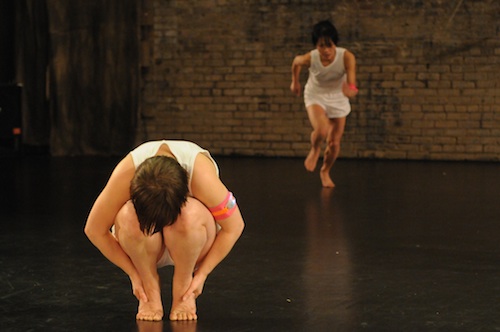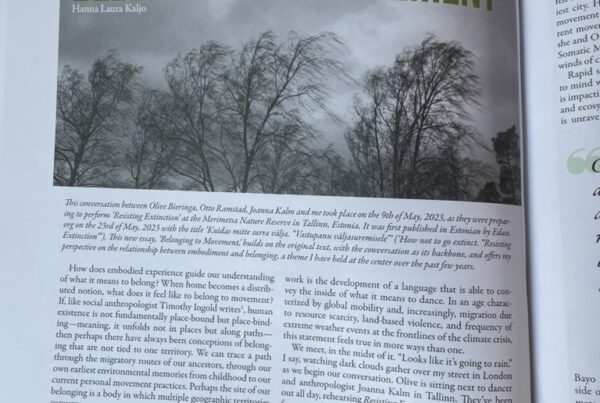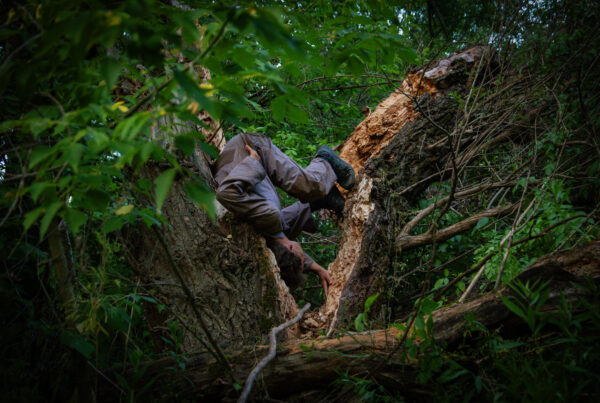Author: Sheila Regan
Source: TC Daily Planet
Date: January 28, 2010
Yes, that’s right. Dance and video artists Olive Bieringa and Otto Ramstad’s mature work, which they have been developing since 2005, incorporates scientific research to explore the dystopian world of a nuclear holocaust.
In addition to the expertise of University of Minnesota physicist Bryce Beverlin, who last week presented a symposium on the piece, the show also features the breathtaking design of composer Zeena Parkins, visual artist Emmett Ramstad, and lighting designer Heidi Eckwall, along with Bieringa and Ramstad’s gorgeous video design.
Hanging from the catwalk, hovering over the entire stage, is draped an amalgamous mass of plastic. The striking cloud of man-made material creates an ominous presence under which the three sections of the performance take place.
My friend Romina Takimoto, who is in the piece, told me that the three principal dancers (Beiringa, Ramstad, and New York performance artist Takemi Kitamura) play representatives from the United States, Japan, and Beiringa’s native New Zealand, which is free from nuclear weapons. The three dancers, robed in plastic turquoise rain suits, with small, slow, sliding steps, weave in and out of moving 3-by-6 boards manipulated by the ensemble, who are dressed in dark green plastic rain suits.
Zeena Parkins’s hypnotic sound design featuring acoustic and electric harp, flutes, recorded wind sounds, and rustling paper creates an eerie world of a civilization about to collapse. Eventually the chorus manipulates the boards out of form, warping them and creating a distorted shape that seems to symbolize the moment of nuclear collapse.
In the second section, Beiringa, Ramstad, and Kitamura appear in white costumes, transformed in their appearance and movement, re-born into the new post-nuclear nightmare. They jerk their limbs, stare at their hands, not completely in control of their bodies. Kitamura has a beautiful solo, highlighted by a gorgeous light falling from directly above her through the plastic ceiling. She repeats a movement with her arms, as if she is shooing a fly away, but the movement looks involuntary.
The third section takes place in a rolling box set that spins around revealing video projections of trees. As the ensemble moves the box around the stage and rotates it, the three principal dancers create tableaus inside and on top of the box. Visually, the entire section is stunning, and at times frightening. During some moments, the dancers duck their heads in order to appear headless.
I took the wandering box to symbolize the homelessness of the characters. Having lost touch with their former reality, they attempt to exist in a world without roots and without connection. The last moment of the piece, Beiringa, inside of the box (which is by then shielded with a curtain of plastic), undresses completely and washes herself. The image is harrowing, but also contains a glimmer of hope. It asks the question: If we do have a nuclear holocaust, is there hope for life to begin again?
Artist talks follow the performances on Friday and Saturday; at 10 a.m. on Saturday there is a workshop on dance and physics.



